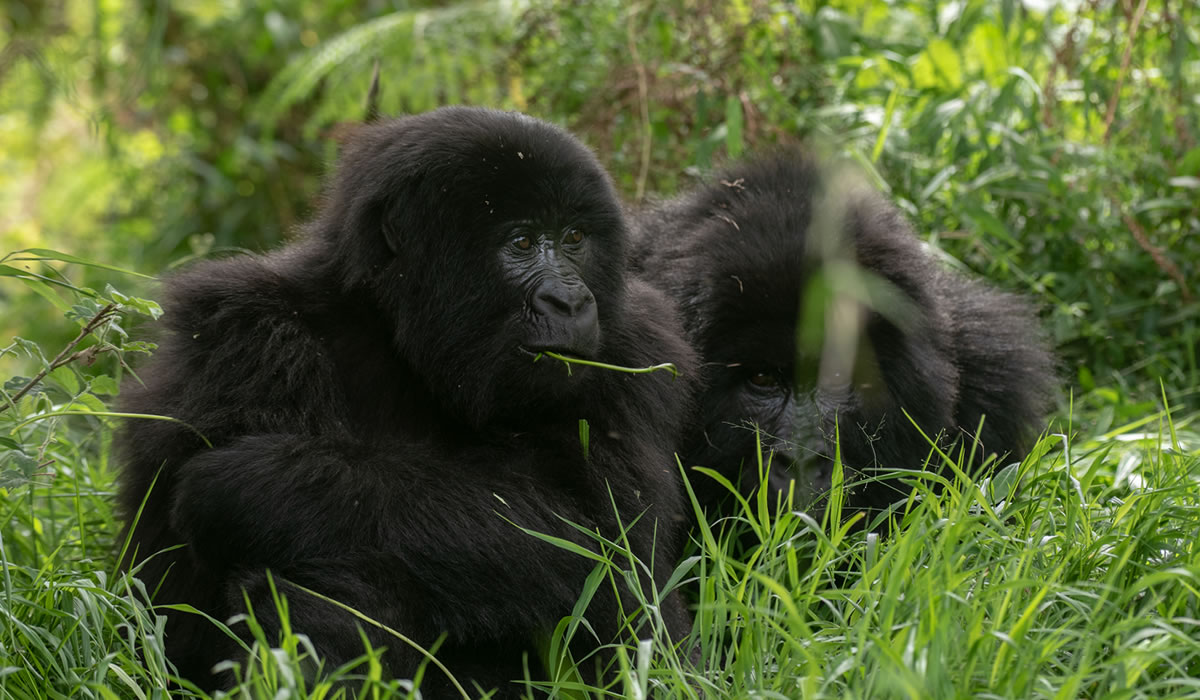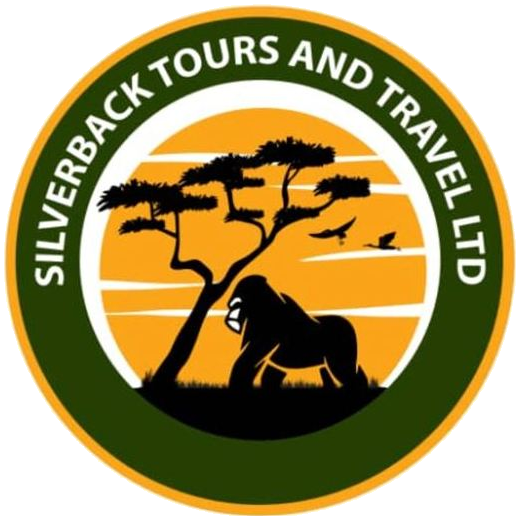Nestled in the southwestern corner of Uganda, where the borders of Uganda, Rwanda, and the Democratic Republic of Congo converge, lies one of Africa’s most enchanting yet underappreciated protected areas, Mgahinga Gorilla National Park. Despite being the smallest national park in Uganda, covering just 33.7 square kilometers, Mgahinga is a powerhouse of biodiversity, culture, and adventure.
This misty montane sanctuary forms part of the Virunga Conservation Area, which includes adjacent parks in Rwanda (Volcanoes National Park) and the DRC (Virunga National Park). Mgahinga offers a rare blend of gorilla trekking, golden monkey tracking, volcano hiking, and rich cultural encounters, all within a compact and easily navigable landscape.
Why Visit Mgahinga?
Mgahinga is often overshadowed by its more famous cousin, Bwindi Impenetrable National Park, known for its higher number of mountain gorilla families. However, Mgahinga provides a more intimate, less crowded, and arguably more scenic experience for visitors. With its trio of volcanic peaks, Mount Muhabura, Mount Gahinga, and Mount Sabinyo, forming a dramatic backdrop, the park is a haven for eco-tourism and soft adventure.
The park’s motto, “Where Gold Meets Silver”, captures its unique distinction as the only Ugandan park where tourists can track both golden monkeys and mountain gorillas, two of the most endangered and charismatic primates in the world.

Things to See and Do in Mgahinga Gorilla National Park
-
Gorilla Trekking
The highlight of any visit to Mgahinga is the opportunity to track the Nyakagezi gorilla family, a well-habituated group known for its stable territory within the park. While Bwindi hosts more gorilla families, Mgahinga’s advantage lies in its accessibility and scenic trekking routes that meander through bamboo forests and volcanic slopes.
The trek can range from 2 to 6 hours depending on the gorillas’ location, and once found, visitors are allowed one hour to observe and photograph these incredible creatures. A close encounter with a silverback gorilla is a profound and humbling wildlife experience.
-
Golden Monkey Tracking
Mgahinga is the only place in Uganda where you can see golden monkeys (Cercopithecus kandti), a rare subspecies of blue monkey found only in the Virunga ranges. These monkeys are fast, playful, and strikingly beautiful with golden-orange fur. Treks to see them are usually less strenuous than gorilla tracking and involve exploring the park’s lower bamboo zones, where the monkeys are most active.
There’s also an option for a golden monkey habituation experience, which allows more extended time with researchers and the monkeys, perfect for photographers and wildlife enthusiasts.
-
Volcano Hiking
Adventurers will be thrilled to learn that Mgahinga offers the chance to climb any of the three dormant volcanoes within its boundaries:
- Mount Sabinyo (3,669m): The most popular climb, known as the “Old Man’s Teeth” due to its jagged peaks. Reaching the summit involves crossing into Rwanda and DRC multiple times—technically—making it a unique three-country experience. The climb is steep but incredibly rewarding, with panoramic views of all three countries.
- Mount Gahinga (3,474m): A more moderate hike suitable for most trekkers. The trail goes through bamboo forest and ends at a beautiful swamp-filled crater at the top.
- Mount Muhabura (4,127m): The tallest of the three and the most challenging to climb. On clear days, hikers are rewarded with views of the Rwenzori Mountains, Lake Edward, and even Bwindi Impenetrable Forest.
Each volcano offers a full-day hike and requires a good level of fitness, appropriate hiking gear, and early start times.
-
Batwa Cultural Experience
Before the creation of the park, the forest was home to the Batwa pygmies, an indigenous tribe of hunter-gatherers. Today, visitors can join the Batwa Trail, a guided cultural tour that tells the story of the Batwa’s way of life, their displacement, and their efforts to preserve their culture.
Led by Batwa guides, the trail includes visits to traditional homes, demonstrations of hunting techniques, medicinal plant use, storytelling, and a visit to a sacred cave once used for rituals. It’s an eye-opening experience that offers cultural depth to your visit and supports indigenous rights and community-based tourism.
-
Birdwatching and Nature Walks
Mgahinga is home to over 180 bird species, including Albertine Rift endemics such as the Rwenzori turaco, dusky crimsonwing, and Kivu ground thrush. Birders can enjoy guided walks through bamboo forests, montane woodlands, and the scenic gorge trail along the park’s boundary.
The Gorge Trail, between Mount Gahinga and Mount Sabinyo, is particularly rewarding for both birding and scenic beauty, offering views of waterfalls, wildflowers, and, with luck, primates along the way.
Best Time to Visit Mgahinga Gorilla National Park
The best time to visit Mgahinga is during the dry seasons, from December to February and June to August. These months offer the most reliable weather for trekking, clearer mountain views, and less muddy trails.
That said, Mgahinga’s tropical climate means rain can occur year-round, especially in the higher altitudes. Even in the dry season, mist and light showers are common, so visitors should pack waterproof gear, warm layers, and sturdy boots.
The wet seasons (March–May and September–November) can still be a good time for travel, especially for birdwatchers and those looking for lush scenery and fewer tourists. Trails may be slippery, but gorilla and golden monkey sightings are still excellent year-round.
Where to Stay
While there are no lodges inside Mgahinga Gorilla National Park itself, several excellent accommodations are available in Kisoro town and around the Sabyinyo and Gahinga foothills, providing convenient access to the park’s activities.
- Mount Gahinga Lodge
This luxurious eco-lodge operated by Volcanoes Safaris is the premier accommodation near the park. Set against the backdrop of the Virunga volcanoes, the lodge offers stylish stone bandas with en-suite bathrooms, solar power, fireplaces, and beautiful gardens. It also supports local community initiatives, including the Batwa Development Programme.
- Kisoro Traveler’s Rest Hotel
A charming mid-range option in Kisoro town, this hotel has historical significance—it once hosted Dian Fossey during her gorilla research days. The property has spacious rooms, good food, and a cozy atmosphere with mountain views.
- Amajambere Iwacu Community Camp
For budget-conscious travelers or those wanting a more authentic local experience, this community-run camp at the park entrance offers affordable bandas, dormitories, and camping options. Staying here supports local livelihoods and offers close access to treks and cultural tours.
- Mutanda Lake Resort
Located about 45 minutes from the park, this stunning resort on the shores of Lake Mutanda offers more than just a place to stay—it’s a destination in itself. With spectacular views, lake activities, and stylish cottages, it’s a perfect blend of nature and comfort for travelers combining Mgahinga with visits to Bwindi or Kisoro.
Getting There
Mgahinga is located about 510 kilometers from Kampala and can be reached by road or air:
- By Road: The journey takes approximately 9–10 hours via Mbarara and Kabale to Kisoro, followed by a 14-km drive to the park gate.
- By Air: There are domestic flights from Entebbe or Kampala (Kajjansi airstrip) to Kisoro Airstrip, which is about 45 minutes from the park. From there, a transfer can be arranged to your lodge.
Due to the mountainous terrain, road travel in the region can be slow but scenic, with breathtaking views of lakes, hills, and volcanoes.
Travel Tips
- Gorilla Permits: Uganda Wildlife Authority issues permits at $700 USD per person (as of 2025). Book early, especially during peak seasons.
- Golden Monkey Permits: These cost around $60 USD per person and can be arranged on short notice.
- What to Pack: Waterproof hiking boots, a rain jacket, long-sleeved shirts, gloves (for trekking), insect repellent, and a good camera.
- Health and Safety: Yellow fever vaccination is required. Carry antimalarials and consult your doctor before traveling.
- Combining Trips: Mgahinga pairs well with Bwindi, Lake Bunyonyi, or Volcanoes National Park in Rwanda, all within a few hours’ drive.
Mgahinga Gorilla National Park is a small park with big experiences. Whether you’re trekking through misty forests in search of mountain gorillas, marveling at golden monkeys leaping through bamboo canopies, or standing on a volcanic summit gazing across three nations, Mgahinga delivers moments that stay with you long after you’ve returned home.
For travelers seeking a quiet, authentic, and richly layered East African experience, Mgahinga is not just a stopover, it’s a destination in its own right. So pack your boots, charge your camera, and come discover where gold meets silver in the heart of the Virungas.

